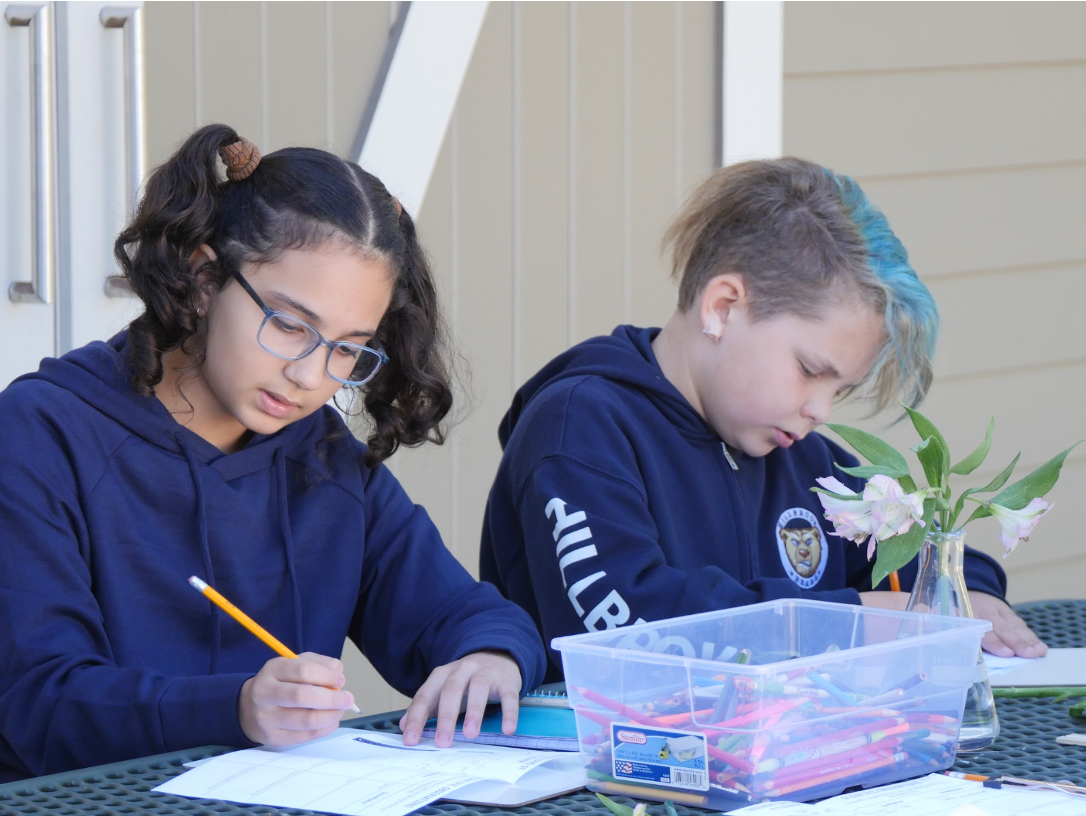“I actually count 23 leaves if you count the little stubs here.”
5th Grade Scientists this week practiced close observation and documentation with a partner using flowers and stems. After defining the differences between qualitative and quantitative observations, students went outside with stalks of different kinds of flowers, their science notebooks, rulers, and colored pencils to practice.
Students offered each other hints and strategies, like “if you want to think of qualitative, think of your five senses.”
And, “Quantitative is anything with a number. It can be measurement, but you can also count.”
In addition to noting several observations in each category, students also did scientific drawings of their specimen, following “ABCD” criteria—Accurate, Big, Colorful and Detailed—including with labeled parts.
Students’ discussions of their observations yielded both interesting differences in perspective as well as predictions that led to questions.
“Would you count these parts as petals even though they’re green?”
And, “Look, it’s hollow in the middle [of the stem]! I bet it’s hollow all the way up or how else would the water go there?”
Look, it’s hollow in the middle [of the stem]! I bet it’s hollow all the way up or how else would the water go there?
Students searched for precise and figurative language to capture their observations of texture, smell, durability, shape, color, and more.
“[The leaf]’s a little rough, like almost like the front of my cat’s tongue where it’s not so sharp.”
And, “Ah! It goes up your nose, the smell is so strong! It’s like lavender, I think.”
As students build their stamina and precision for noticing objects in nature, they are better prepared to understand definitions of parts and their interactions, and also to appreciate the many observations by scientists through time who have shaped our understanding of natural systems. As they explore the systems at work in birds, planets, brains, and more this year, they will connect the ways scientists around the world have used their close observations to generate, test, prove and disprove new theories!

